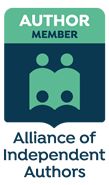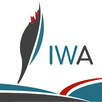|
Photo by Renee Fisher on Unsplash There is no right or wrong choice when it comes to publishing a book. Some prefer to publish with a publisher, others like myself choose to self-publish. Both roads, however, have some pros and cons, and new authors need to choose what works best for them. There is a misconception that self-published authors produce a lower value product which I do not agree with. Self-publishing can produce quality books if the authors follow all the publishing steps a traditional publisher would. In this series of blogs, I will try to highlight some differences that I have learned. We will start off talking about money. Money The first thing a new author needs to consider when selecting their path on the publishing journey is money. How much money do you have to publish? The traditional publisher knows the market and what books they would like to publish, and how many they expect to sell. These are the criteria they’ll use to determine whether they will pick your book and publish it. The publisher is taking the risk here and not the author. Once they select your book, they may or may not pay you an amount for the manuscript in advance. If they consider your book a risk, they will want to invest little, hoping the market is better than they thought it would be. Small publishers also might not have the required funds to give you an advance. Once your book is selected from hundreds of submissions, the publisher is the one who will pay for an editor, typesetter and cover designer. Once the publisher recuperates their investment in your book, that is when you will start seeing money. How much money you receive, and when, will be part of your contract with your publisher, so read it carefully. When self-publishing, especially if it is your first book, you will be navigating blindly through the genre of your book and your intended audience. You do not have the vast knowledge that a professional publisher has about what sells, why, and in what numbers. It is you who takes the risk. In order to publish quality content, you need to pay up front for your editor, typesetter and cover design before you see any money. With self-publishing, however, you cut the middleman, the publisher. Once you put your book up for sale, you see information almost in real time on how many books you’re selling and how much profit you’re receiving. Your cut per book will also be higher than what a traditional publisher usually offers. Some websites like Amazon will start paying you within three months regardless of how many books were sold. What if your book is unsuccessful? With a traditional publisher, the publisher is the one who reports the loss on the investment. As an author, you get to keep your advance and then the book dies its natural death. You may be able to get the publishing rights back and continue with the book as self-published, but this will depend on your contract. With self-publishing, it is you, the author, who invested the money. If the book doesn’t do well, you may not get your money back, but the book will still be available for sale as an eBook and as Print on Demand. Eventually, in years to come, you might still make your money back or even profit.
0 Comments
Leave a Reply. |

 RSS Feed
RSS Feed



